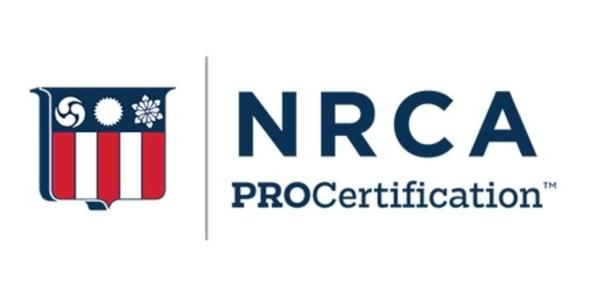Why NRCA’s ProCertification™ is the Future of Our Industry

By Karen L. Edwards, RCS Editor.
The program is going to elevate the professional of the industry and provide a clear career path for younger workers entering the workforce.
When I take off my RCS Editor hat, one of the other hats I put on is the director for the Roofing Technology Think Tank. During our recent meetup in Massachusetts at the OMG headquarters, we were honored to have Reid Ribble present to our group about the future of our industry and the reasons why the new ProCertification is going to prepare us to thrive in the future.
Reid began by telling us that the roofing industry has an image problem that we need to change, explaining that “we can’t expect anyone to respect what we do until we respect what we do.” He said that as he talks to parents of teenagers and the conversation turns to future careers, not even one parent has said their child has considered going into roofing. It’s just not on their radar, and when they do have an awareness of it, it’s not thought highly of.
When asked why, the common response is because they don’t think of roofing as a professional trade. If their child wants to be an electrician, he or she has a path to become a master electrician. If they want to become a plumber, they have a clear path to earning their master plumber designation. If they become a carpenter, they can become a master carpenter, but if they become a roofer, they just become a roofer.
Without a professional certification and path to become the expert or master in the trade, we face an even bigger challenge in attracting the future workforce into our industry.
Declining birth rates and changing demographics are a threat
Reid shared data from the U.S. Bureau of Labor Statistics that showed worker participation rates for the American population today standing at 63%. “This is at an historic low and the reason for this is because our demographics are changing. We have an aging population with 3,520,000 Americans retiring every single year – that is a rate of 10,000 every single day. And that's going to last for the next 15 years as the baby boomer generation enters into retirement,” Reid said. “If you were to do a deeper dive, the numbers get much worse than this.”
The second reason the worker participation rates are going down is the declining birth rate Reid explained to us. “Right now, the U.S. birth rate is 1.8 because so many moms and dads are no longer replacing themselves,” he said. “We need to have a birthrate of 2.1 percent just to break even with the people who are dying.”

In looking at population data from the U.S. Census Bureau, in 1960, the chart of the populations was shaped more like a pyramid, with a larger number of younger people supporting a smaller number of older people. The projection for 2060, just 100 years later, shows a decline in the number of younger population and a big increase in the older ones. There will be even fewer younger workers to bring into the workforce.
Creating the pathway to master certification
NRCA is recognizing this demographic change, and they are beginning to position themselves to be in a better place to compete for that smaller number of people that will have to do the work. NRCA has been talking with roofing contractors, roofing workers, roofing material suppliers and more to try to figure out what is it going to take to professionalize the roofing industry, so that young people want to be a part of it.
Reid’s team at NRCA has been working on the answer to how to build an actual career path with a third-party authentication that would not only attract a future workforce but educate, train and certify our workers to become not just certified, but achieve master roofer status. This is not an easy task to undertake. Just the first course alone, Certified Thermoplastic System Installer, required large resources to develop because it’s being built to ISO standards, and it’s being built in multiple languages.
At the 2019 International Roofing Expo, NRCA launched its first three courses. The other two are Certified Asphalt Shingle Installer and Certified Roofing Foreman. There are 20 more classes to come, with five of those being master level classes.
It was important to Reid and the NRCA that the certifications be stackable, meaning that a person could add certification on top of certification with the ultimate goal of becoming a master. There will be master levels for steep-slope system installers, low-slope system installers, service technicians, solar roofing and roofing system installer.
Workers can get started working toward their certifications today. Learn more on the NRCA ProCertification webpage.























Comments
Leave a Reply
Have an account? Login to leave a comment!
Sign In